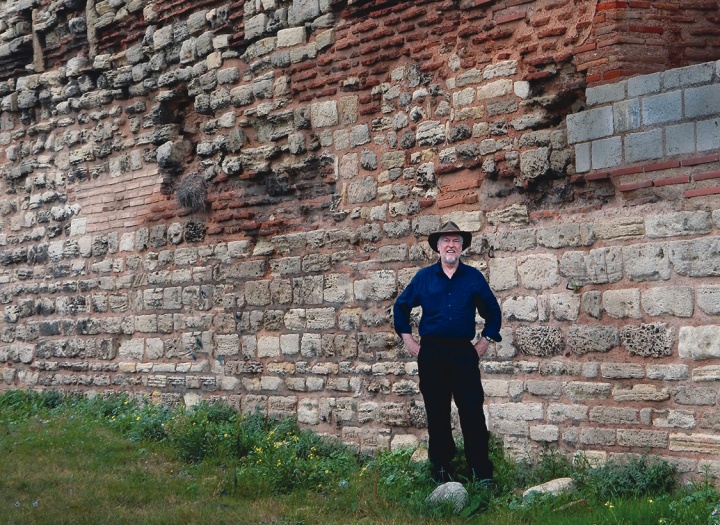The Rise and Fall of Empires
Downloads
The Rise and Fall of Empires

The walls of Constantinople defended the capital of the Byzantine Empire for more than a thousand years—a virtual eternity from a human perspective.
The Byzantine Empire was itself a continuation of the Roman Empire, which had Rome as its capital for approximately a thousand years before Constantine the Great founded a new capital at the site of a relatively obscure Greek city named Byzantium in A.D. 324.
Constantine named his new capital New Rome, and it soon became known as Constantinople, meaning “city of Constantine.” One of his first acts was to build strong defensive walls for protection. The city’s walls were greatly expanded during the reign of Emperor Theodosius II (408-450).
Theodosius’ defenses were formidable, involving a wide moat and three progressively stronger stone-and-brick walls, the last one 15 feet thick and rising 35 to 40 feet high, fortified by 96 towers rising another 50 to 60 feet. From each wall the city’s defenders could rain down on invaders arrows, spears, stones and blows from swords and axes.
For more than a thousand years—except for a brief conquest during the Fourth Crusade in 1204—invaders tried to breach the walls but failed. The walls stood against floods, earthquakes and armies. They were thought impregnable.
Until they weren’t.
The Byzantine Empire, like Rome and many other empires that preceded it, largely rotted out from within. It grew weaker and weaker as the lands it controlled shrank at the hands of Arab Muslims, Serbians, Bulgarians and finally, after a devastating epidemic of bubonic plague, by invading Ottoman Muslims led by Sultan Mehmed II.
After a 53-day siege, and with the aid of cannons capable of hurling 600-pound stone balls that could shatter brick-and-stone walls, the Ottoman hordes overwhelmed Constantinople’s outnumbered defenders and captured the city in 1453. A few escaped by ship, thousands were killed, and tens of thousands were enslaved or forcibly deported.
Mehmed II, better known to history as Mehmed the Conqueror, renamed the city Istanbul and made it the capital of his Ottoman Empire. The empire that had stood for more than a thousand years was no more. No other empire in human history has lasted so long.
A century ago World War I brought the end of the Russian, German and Ottoman Empires. In the aftermath of World War II, a financially devastated Britain found itself managing the decline of a greatly reduced British Empire. In more recent decades the world has witnessed the collapse of the Soviet empire. In recent years America’s decline in global influence has raised the question as to whether we will soon see the end of an American empire.
We are living in a world of massive change. As American power and influence rapidly recedes, previous major powers such as Russia, China, Germany, and even the Islamic and Ottoman Empires seek to regain their former might and glory.
What does it all mean?
In Daniel 4:25 and Daniel 4:32, we’re told that a spiritual dimension is at work in world affairs that can’t be seen with the human eye: “The Most High rules in the kingdom of men, and gives it to whomever He chooses” (emphasis added).
The Hebrew prophet Daniel knew whereof he spoke. He lived in the last days of the kingdom of Judah, which met its end through invasion and exile at the hands of Nebuchadnezzar’s Babylonian Empire. Daniel then served as an official in Babylon until it, too, met its end at the hands of a new empire, that of the Medes and Persians.
Daniel then served them into his old age—having witnessed in his lifetime the rise of Babylon, the fall of Judah, the rise of the Medo-Persian Empire, and the fall of Babylon. And through divine revelations he learned of empires yet to come—Greece, Rome, and ultimately the greatest Kingdom of all, the Kingdom of God that will rule on earth without end after the return of Jesus Christ (Daniel 2:44-45).
Where are these trends taking our world? God knows—literally—and He promises us that “He gives wisdom to the wise and knowledge to those who have understanding” (Daniel 2:21).
You too can share in that understanding in the pages of Beyond Today. Be sure to read this issue carefully to better grasp where our world is heading and why!
